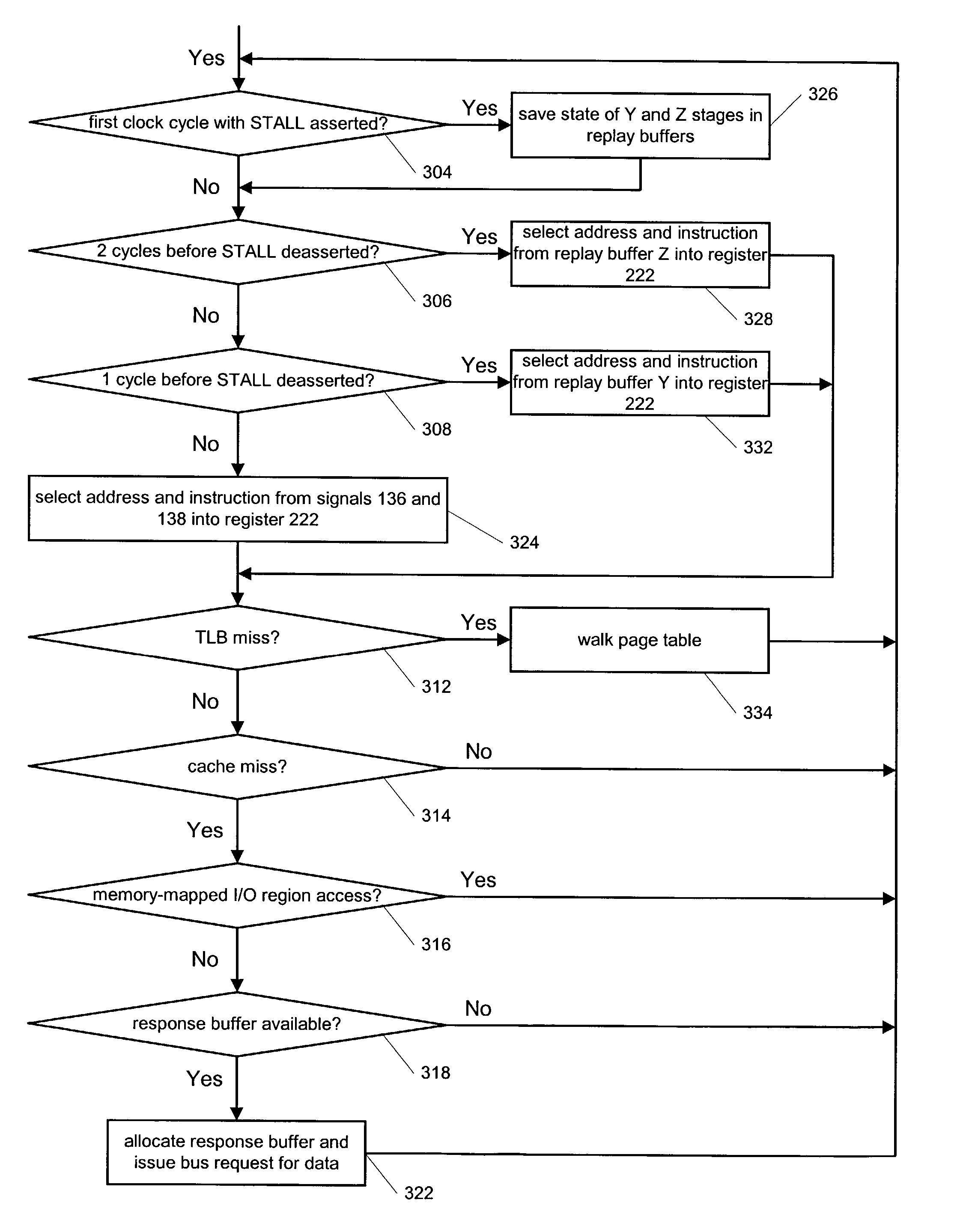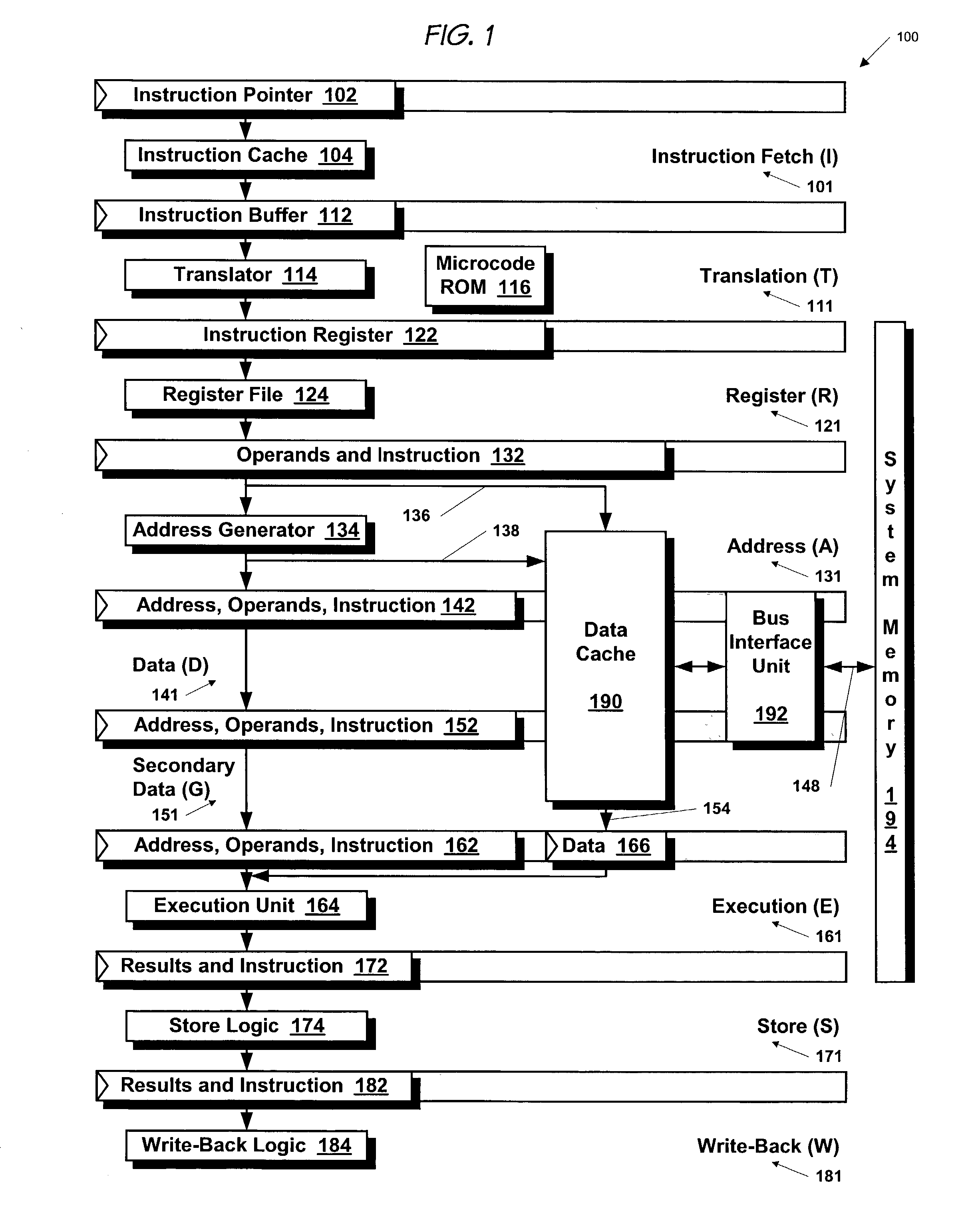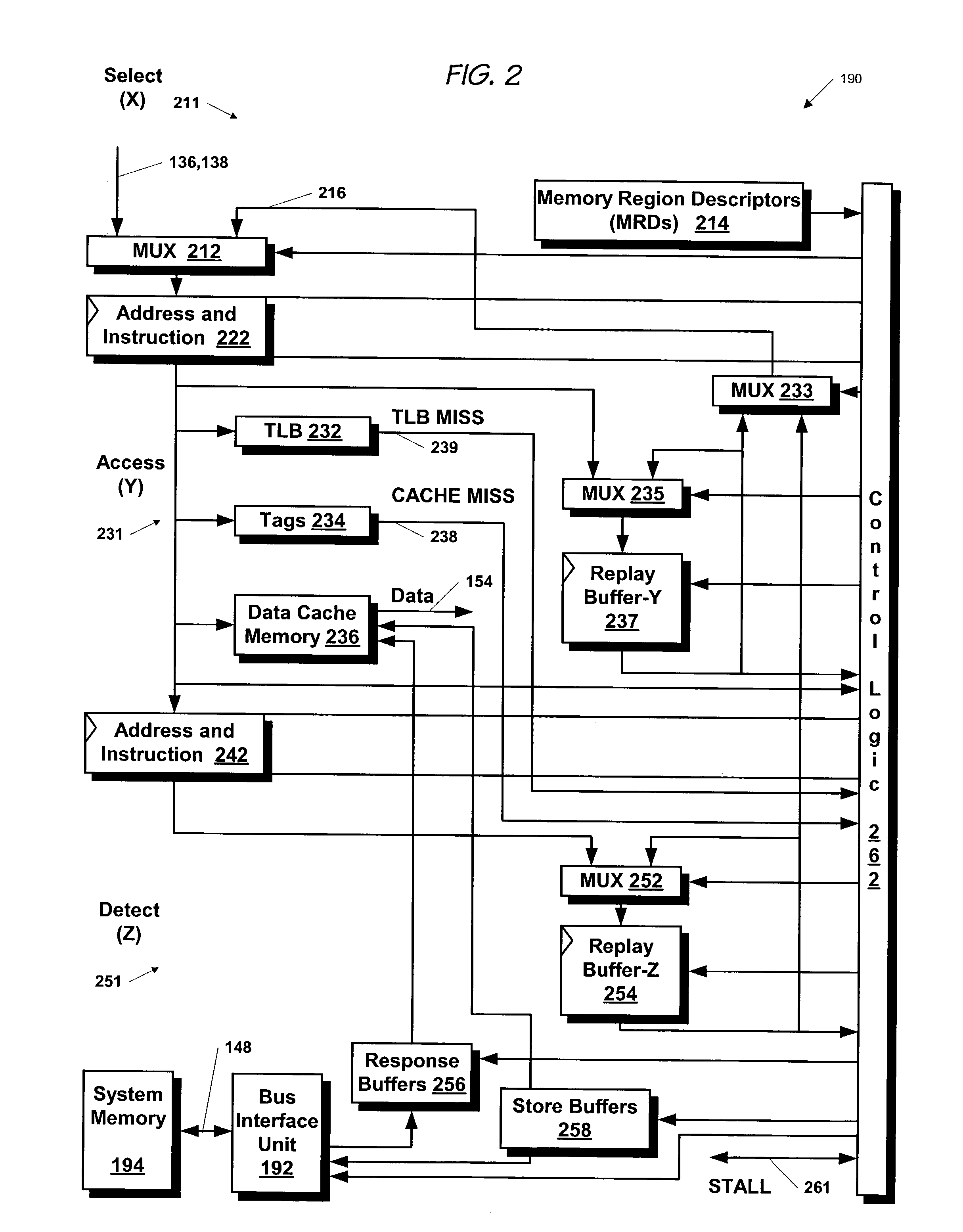Method and apparatus for resolving additional load misses in a single pipeline processor under stalls of instructions not accessing memory-mapped I/O regions
- Summary
- Abstract
- Description
- Claims
- Application Information
AI Technical Summary
Benefits of technology
Problems solved by technology
Method used
Image
Examples
Embodiment Construction
[0041]Referring to FIG. 1, a block diagram of an in-order single-issue pipelined microprocessor 100 according to the present invention is shown. The microprocessor 100 comprises various pipeline stages including: Instruction Fetch (I) stage 101, Translation (T) stage 111, Register (R) stage 121, Address (A) stage 131, Data (D) stage 141, Secondary Data (G) stage 151, Execution (E) stage 161, Store (S) stage 171 and Write-Back (W) stage 181. Instructions enter at the top of the pipeline 100 in the I-stage 101 and exit, i.e., are retired, at the bottom of the pipeline in the W-stage 181 where the microprocessor 100 state is updated.
[0042]The I-stage 101 comprises an instruction pointer register 102 that stores a memory address of the next instruction, or cache line containing the next instruction, to be fetched from an instruction cache 104 coupled to the instruction pointer 102. The instruction cache 104 is a memory, such as an L1 cache, that caches previously fetched program instruc...
PUM
 Login to View More
Login to View More Abstract
Description
Claims
Application Information
 Login to View More
Login to View More - R&D
- Intellectual Property
- Life Sciences
- Materials
- Tech Scout
- Unparalleled Data Quality
- Higher Quality Content
- 60% Fewer Hallucinations
Browse by: Latest US Patents, China's latest patents, Technical Efficacy Thesaurus, Application Domain, Technology Topic, Popular Technical Reports.
© 2025 PatSnap. All rights reserved.Legal|Privacy policy|Modern Slavery Act Transparency Statement|Sitemap|About US| Contact US: help@patsnap.com



